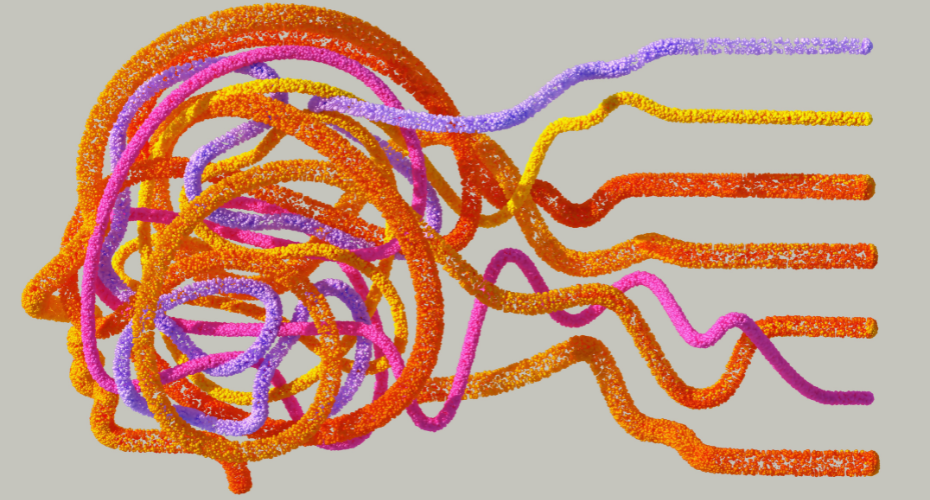Mittal’s Mission
Northwestern researcher Vijay Mittal follows adolescents at elevated risk of serious mental illnesses to inform preventative strategies and interventions.

Following his undergraduate studies, Vijay Mittal worked in a lab serving young adults recently diagnosed with schizophrenia. And immediately, Mittal noticed the tumult and stress of the chronic, debilitating, expensive, and largely mysterious condition on individuals as well as their families.
“These individuals, many in their early 20s like me, were in college, at their first job, or in their first serious romantic relationship and then all of a sudden their entire lives were turned upside down,” says Mittal, the David S. Holmes Professor of Brain Science at Northwestern University’s Weinberg College of Arts and Sciences.
The experience fueled Mittal’s subsequent academic pursuits as well as his scientific purpose. He wanted to understand and predict serious mental illnesses before they happened, with the goal of preventing them or lessening the severity of their course. That scholarly mission has consumed much of the last two decades for Mittal, the founding director of Northwestern’s new Institute for Adolescent Mental Health and Well Being.
Tracking adolescents at risk
Mittal’s research explores how biological and social changes occurring in adolescence and young adulthood contribute to severe mental illness like schizophrenia and depression. His thinking: the significant biological changes taking place during the adolescent period – one of rampant changes to the brain rivaling those of the newborn stage – combined with high stress sensitivity amid a period of increasingly adult responsibilities interact with earlier vulnerabilities and trigger the manifestation of mental health disorders.
In many of his projects, Mittal finds young people showing risk signs of mental health disorders and then follows them over multiple years. He conducts varied assessments looking at everything from smartphone use and neuroimaging to hormone assays and cognitive tasks. While some of the at-risk youth develop mental health disorders, others do not. Mittal and his team then return to the data and identify where people diverged before crafting translatable plans to reduce symptoms and support well-being.
“We’re able to promote earlier identification and try to intervene with the idea that we will either ameliorate the course of these disorders or stop from happening altogether,” Mittal says.
Promising research on exercise
For example, Mittal’s research team found people who developed psychotic disorders showed degradation or abnormal development in the hippocampus – a part of the brain involved with critical functions like forming new memories and spatial navigation. At the same time, Mittal noted separate literature suggesting regular aerobic exercise promotes new neuron growth and protection in the hippocampus.
With those two discoveries in hand, Mittal designed a study pairing high-risk youth with an exercise physiologist. Over three months, the Mittal-led research group challenged participants to complete high-intensity running efforts three times each week. During this time, researchers also assessed cognition and symptoms in the brain. The results were striking – and inspiring. Symptoms remediated, cognitive function improved, and these changes mirrored normalization of brain network connectivity.
“It gives us significant hope because many of the treatments for disorders like psychosis or schizophrenia involve expensive medications that come with side effects and stigma. Something like exercise, however, is widely available and free,” Mittal says.
Now, Mittal is aiming to do a larger, multi-site study also incorporating a focus on the basal ganglia, another brain structure affected by exercise and also relevant in schizophrenia.
“If we can develop instruments and approaches to help people at risk of these debilitating mental conditions, then we’re on our way to giving help where and when it’s needed most,” Mittal says.
Ongoing efforts
Mittal’s work, of course, hasn’t stopped there. He’s currently involved in multiple efforts to foil the disruptive nature of serious mental health disorders. Mittal’s work includes:
- a multi-site study to develop a battery capable of identifying youth at high risk for psychosis, looking into areas sensitive to early disease-driving mechanisms, such as how these individuals experience visual information, react to emotional material or rewards, or demonstrate motor function
- a project generating age-appropriate instruments for assessing the elements that go into social interaction to improve the way researchers and clinicians study, understand, and develop treatments for at-risk youth
- an artificial intelligence-fueled effort evaluating young adult risk for psychosis through language processing
Examining adolescents remains a key component of Mittal’s work. He says many mental health disorders are easier to study before they fully set in and other factors emerge to complicate a clear assessment.
“I’m for anything we can do to improve the course,” he says. “Instead of people giving up on their first relationship or first job or time in college, let’s give them the tools to succeed. We can do better than the status quo.”